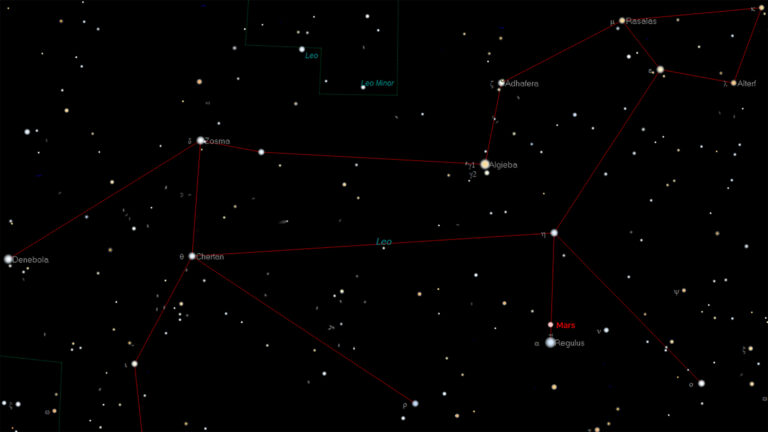Key Takeaways:
We can use the colors of Europa’s surface to tell us about the chemical compounds that make up the surface — and subsurface — of the jovian moon. Even before the first spacecraft made a close visit to Europa, astronomers on Earth used telescopes to study the moon and were able to use a technique called spectroscopy to determine that Europa’s surface is composed mostly of water ice.
Spectroscopy is the scientific measurement of the brightness of the surface of an object at many different wavelengths of light. The brightness at visible wavelengths gives an object its color as seen by human eyes — just by looking at the colors of Earth rocks, for example, we can easily distinguish between a black volcanic rock, like basalt, and a light tan rock, like sandstone. The colors come from the different chemical elements that make up each rock. Scientists can extend this technique to wavelengths the human eye can’t see, like infrared and ultraviolet. By looking at the detailed patterns of brightness at a wide range of wavelengths, they can determine a unique pattern, or “spectrum,” associated with different materials.
Using the technique of spectroscopy, scientists study Europa’s surface with images taken by robotic spacecraft. They have found that bright white water ice or frost covers most of the moon’s surface, and regions of yellowish, brownish, or reddish colors also exist. These areas have spectra that are consistent with salts with added water (called hydrated salts), such as magnesium sulfate or sulfuric acid. These non-ice materials are largely associated with regions of Europa’s surface that appear geologically young, such as ridges, large impact structures, and disrupted terrain called “chaos.” Formation models for these features suggest that they could bring up materials from under the surface. In addition, the non-ice materials are remarkably consistent in composition all over Europa’s surface, suggesting that they all came from a single, well-mixed subsurface layer.
The colors of Europa’s surface also vary with longitude. The moon is tidally locked, meaning that the same side always faces Jupiter. The hemisphere that leads Europa in its orbit experiences the most dust, including yellow sulfur from the jovian moon Io, while the hemisphere that always trails endures more radiation from high-energy charged particles accelerated by Jupiter’s strong magnetic field. This radiation changes the chemistry, and therefore the color, of Europa’s surface. Scientists have found that the concentration of salts on the moon’s surface is higher on the trailing hemisphere. Although salts are generally colorless, radiation also can process sulfur-containing salts to produce long chains of sulfur atoms that are reddish in color.
These observations, plus other evidence from gravity and magnetic field measurements, have helped lead scientists to conclude that Europa likely has a huge ocean of liquid water underneath its icy surface. The salts from this ocean water could eventually reach the surface during the formation of geologically active features, staining it yellow, red, or brown as the salts interact with radiation and with sulfur from Io, depending on their location on the surface.










